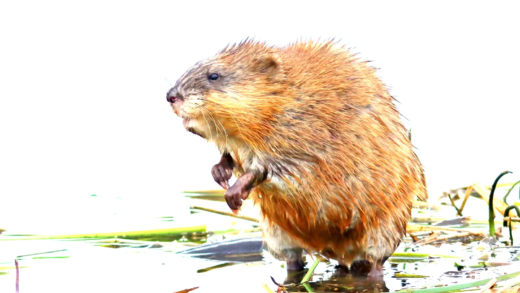Potato bugs, known for their destructive impact on potato crops, have influenced agricultural practices for over 200 years. Home gardeners can protect their gardens through regular monitoring, companion planting, and physical barriers. Uncontrolled potato bugs can lead to severe crop damage and economic loss. Recent developments in pest control include biological agents and smart agriculture technologies that enhance pest management effectiveness.
What is the Potato Bug?
The potato bug, scientifically known as Leptinotarsa decemlineata, is a notorious pest that primarily targets potato plants. These insects are easily identifiable due to their distinct appearance: a rounded body, yellowish or greenish hue, and characteristic black stripes along their backs. Adult potato bugs typically measure around half an inch long, making them relatively large compared to other pests.
Potato bugs undergo several life stages, including eggs, larvae, pupae, and adults. The larvae, which are often the most destructive phase, are small, elongated, and usually red or orange with black spots. They feed voraciously on the leaves of potato plants, leading to significant damage. The adults, while also harmful, are less destructive than their larvae.
Why is the Potato Bug Considered a Super Pest?
The potato bug is deemed a “super pest” due to its rapid reproduction and the severe impact it has on agriculture, particularly potato farming. A single female can lay up to 500 eggs in her lifetime, creating a population explosion if not controlled. This high reproductive rate allows potato bugs to quickly overwhelm fields, leading to extensive crop loss.
In agricultural terms, potato bugs can cause significant financial losses. Farmers may experience reduced yields and increased costs associated with pest management and crop replacement. In severe infestations, entire fields may become unharvestable, pushing farmers into financial distress. The potato bug’s resilience and adaptability to various environmental conditions further exacerbate the challenges of managing these pests.
Effects of Potato Bugs on Potato Plants
Potato bugs inflict considerable harm on potato crops through their feeding habits. Both larvae and adult bugs consume the foliage of potato plants, which is crucial for photosynthesis. As they strip leaves away, the plants become weaker and less capable of producing the energy they need to grow. This can result in stunted growth, reduced tuber size, and even plant death.
Moreover, potato bugs can introduce diseases to potato plants, further complicating the issue. Fungal and bacterial infections can spread as bugs move from plant to plant, creating a cycle of damage that is difficult to control. Farmers must remain vigilant and proactive in identifying and addressing potato bug infestations to protect their crops effectively.
Signs of a Potato Bug Infestation
Recognizing the signs of a potato bug infestation is crucial for effective management. Farmers should be vigilant and monitor their crops regularly. Here are key indicators:
- Chewed Leaves: The most visible sign is the damage on potato leaves. Look for irregular holes or complete defoliation, especially on younger plants.
- Presence of Larvae: Red or orange larvae with black spots can often be found on the undersides of leaves, feeding aggressively.
- Adult Bugs: Spotting the adult potato bugs, with their distinctive yellow or green bodies and black stripes, is a clear indication of an infestation.
- Fecal Droppings: Dark specks on leaves are a sign of larvae feeding and can help confirm their presence.
- Stunted Growth: Affected plants may show signs of stunted growth and smaller tubers due to extensive feeding damage.
By identifying these signs early, farmers can take timely action to mitigate the infestation and protect their crops.
Control Methods for Potato Bugs
Managing potato bug infestations effectively requires a combination of strategies. Here are practical control methods:
- Crop Rotation: Changing the planting location of potatoes annually can disrupt the life cycle of potato bugs, reducing their population.
- Handpicking: For small gardens, handpicking adults and larvae can be effective. Be sure to check the undersides of leaves.
- Insecticidal Soaps: Applying insecticidal soaps can help control adult bugs and larvae without harming beneficial insects.
- Neem Oil: This natural pesticide disrupts the feeding and reproductive cycles of potato bugs, making it an effective choice.
- Row Covers: Protecting young plants with row covers can prevent adult bugs from laying eggs on them.
Implementing these methods can significantly reduce potato bug populations and minimize damage to potato crops.
Natural Predators of Potato Bugs
Encouraging natural predators is an eco-friendly way to manage potato bugs. Here are some beneficial insects:
- Ladybugs: Known for their appetite for aphids, ladybugs also consume potato bug eggs and larvae.
- Parasitic Wasps: These wasps lay their eggs inside potato bug larvae, effectively controlling their numbers.
- Green Lacewings: The larvae of lacewings are voracious feeders of potato bugs and other pests, providing a natural form of pest control.
- Ground Beetles: These beetles feed on potato bug eggs and larvae, helping to keep populations in check.
By fostering a diverse ecosystem in the garden, farmers can enhance the presence of these natural predators and reduce reliance on chemical controls.
Importance of Potato Bugs in Agriculture Over 200 Years
Potato bugs have played a significant role in agriculture for over two centuries. Their presence has shaped pest management practices and agricultural policies. Historically, potato bugs first became a notable problem in the mid-19th century, causing devastating losses to potato crops during the Irish Potato Famine. This crisis highlighted the vulnerability of monoculture farming, leading to changes in farming practices and pest control methods.
Over the years, potato bugs have prompted the development of various control strategies, from chemical pesticides to integrated pest management (IPM). Farmers and researchers have learned the importance of diversifying crops and employing natural predators to mitigate the impact of these pests. The long-term significance of potato bugs lies in their ability to influence agricultural sustainability and the evolution of pest control technologies.
Protecting Home Gardens from Potato Bugs
Home gardeners can take proactive measures to protect their gardens from potato bugs. Early prevention is key to keeping these pests at bay. Here are effective strategies to implement:
- Regular Monitoring: Frequently check plants for signs of potato bugs, especially during the growing season. Early detection is crucial.
- Companion Planting: Planting flowers like marigolds or herbs such as basil can repel potato bugs and attract beneficial insects.
- Physical Barriers: Use row covers to shield young plants from adult potato bugs while allowing sunlight and moisture to reach them.
- Mulching: Applying mulch can deter pests and maintain soil moisture, promoting healthier plants.
- Organic Pesticides: Utilize natural insecticides like diatomaceous earth or neem oil, which are less harmful to beneficial insects.
Implementing these methods can significantly reduce the likelihood of a potato bug infestation in home gardens.
Consequences of Uncontrolled Potato Bugs in Crops
Neglecting potato bug management can have severe consequences for crops. Without proper control measures, potato bugs can lead to:
- Severe Crop Damage: Infestations can decimate potato plants, leading to reduced yields and even total crop loss.
- Increased Pest Resistance: Over-reliance on chemical pesticides may result in pest resistance, making future control efforts more challenging.
- Economic Loss: Farmers face financial hardships due to lost crops and increased costs for pest management solutions.
- Disease Spread: Potato bugs can act as vectors for diseases, further compromising plant health and productivity.
To avoid these dire outcomes, it is essential for farmers to adopt proactive pest management strategies and stay informed about potato bug populations.
Recent Developments in Pest Control for Potato Bugs
Innovations in pest control are continuously evolving to combat potato bugs effectively. Recent developments include:
- Biological Control Agents: Researchers are investigating the use of specific fungi and bacteria that target potato bugs without harming beneficial insects.
- Genetic Engineering: Advances in biotechnology have led to the development of genetically modified potato varieties that are resistant to potato bug infestations.
- Smart Agriculture Technologies: The use of drones and sensors helps farmers monitor pest populations and apply targeted treatments, reducing pesticide use.
- Integrated Pest Management (IPM): This holistic approach combines various control methods, promoting sustainability while effectively managing potato bugs.
Staying updated on these advancements is crucial for farmers seeking to protect their crops while minimizing environmental impact.





Comments are closed.